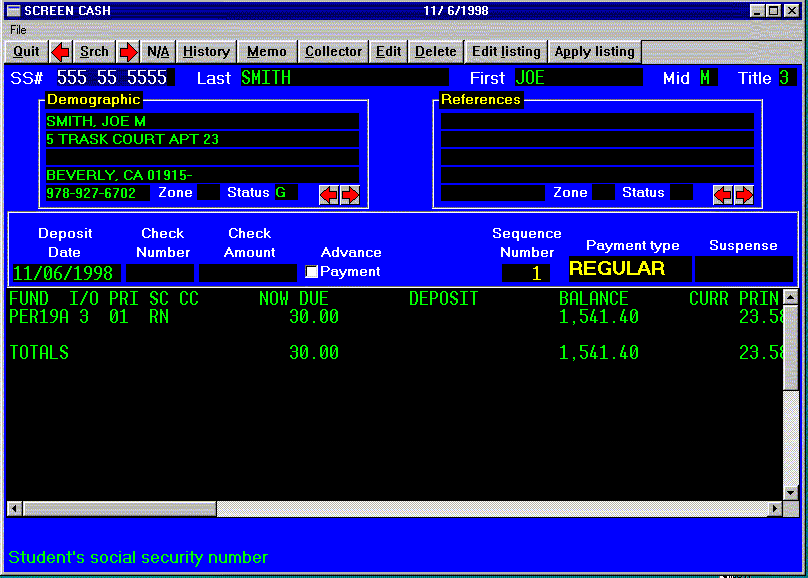Inside this issue:
What's New: SAL Windows Update
1998 Amendments to the Higher Education Act
Technology
Department of Education

Access to the Cash Window is provided when you click on the CASH Tool Bar item which is located on the Primary window we reviewed last month. The body of the window contains four distinct areas.
listed below are the 1998 Amendments to the Higher Education Act (HEA) which relate to the Federal Perkins Loan Program.
Since April, we have been investigating the possibility of providing group discussion capabilities. Group discussions allow any number of people to participate in a discussion. Unlike a "chat room", we didn't want something that required everyone to be on-line at the same time. We wanted a solution were discussions are recorded and organized so that you can view or participate when convenient for you.
We examined several technologies which could provide group discussions. We needed something that would permit access through our existing Web site but would be powerful enough for future growth. We finally selected Dnews from NetWin.
Using the Message Service, you can post comments or questions. Either your peers or ECSI staff can respond. There's virtually no limit to the number of people who can participate in a single topic (and almost no limit to the number of topics).
We have a Web interface so you can use your existing browser to navigate the discussions. The Web interface doesn't contain a lot of advanced features so it is very simple to use. If you want more features or a "Windows" look and feel, we provide downloads and instructions for software that will address that issue. The Windows applications take about 15 minutes to set up but provide a much better interface.
We're very excited about the service and hope you will find it a valuable addition to our communications offerings. You can find plenty of information in the Clients section of the Web site, under the heading Message Service. This service is new to most people but don't be afraid to jump in and try it.
As part of the Department of Education's (the Department) continuing move toward creating an efficient and cost-effective Federal student aid delivery system by utilizing existing technology, we are pleased to announce that the Federal Perkins and National Direct Student Loan Programs Directory of Designated Low-Income Schools for Teacher Cancellation Benefits for the 1998-99 School Year (the Directory) will be available on the Department's Web site at http://www.ed.gov/studentaid. Institutions will no longer receive the Directory through the mail.